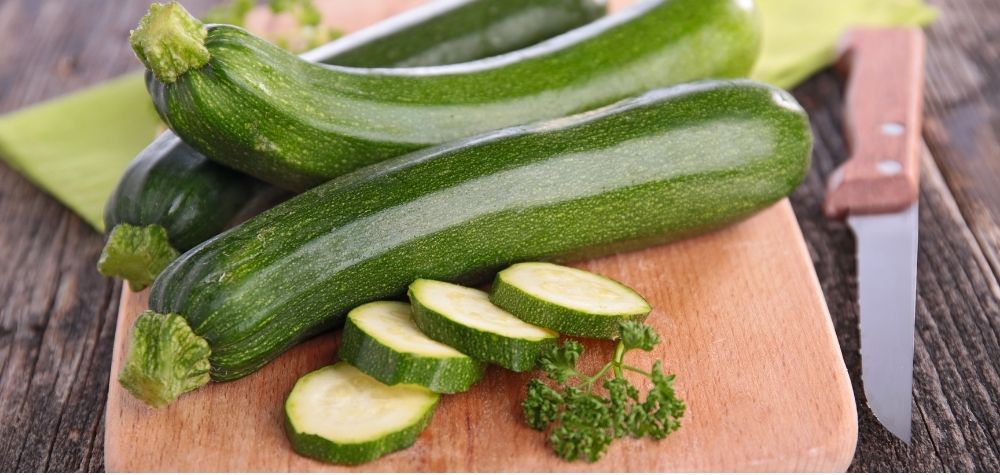Zucchini, often celebrated for its versatility in the kitchen and packed with essential nutrients, has earned a well-deserved place in many diets. This humble vegetable, also known as courgette, boasts an impressive nutritional profile, making it a go-to ingredient for everything from savory side dishes to delectable baked goods. However, while zucchini’s health benefits are widely acknowledged, few are aware of its rare yet potentially serious toxic side.
A recent medical case from Poland underscores this duality. A 54-year-old woman, otherwise in good health, was rushed to the emergency room after consuming zucchini bread. She experienced severe abdominal pain, uncontrollable vomiting, and bloody diarrhea. Upon investigation, doctors diagnosed her with liver damage caused by cucurbitacin poisoning—a rare condition triggered by toxic compounds naturally found in zucchini.
The Nutritional Allure of Zucchini
Zucchini is a nutritional powerhouse, brimming with vitamins, minerals, and antioxidants. Rich in potassium, iron, calcium, and zinc, it also provides several B vitamins, such as B6 and riboflavin, which are essential for energy production and brain health. Additionally, zucchini’s high antioxidant content protects the body from oxidative stress and inflammation, reducing the risk of chronic diseases.
Its high water content and low calorie count make zucchini an ideal choice for weight management. Soluble and insoluble fiber in zucchini supports digestive health by promoting regular bowel movements and nurturing beneficial gut bacteria. Fiber also helps stabilize blood sugar levels, preventing post-meal spikes and lowering the risk of type 2 diabetes.
The vegetable’s versatility in the kitchen only enhances its appeal. From spiralized zucchini noodles (zoodles) to soups, stews, and baked goods, its mild flavor complements countless dishes.
When Zucchini Turns Toxic: Understanding Cucurbitacin Poisoning
Despite its many health benefits, zucchini harbors a hidden danger: cucurbitacins. These organic compounds serve as a natural defense mechanism for plants, imparting a bitter taste to ward off predators. While cucurbitacins are usually present in trace amounts, environmental factors such as cross-pollination with wild species or stress during growth can lead to an overproduction of these compounds, making zucchini toxic to humans.
Cucurbitacin poisoning, though rare, can have serious consequences. The compounds disrupt cellular processes and irritate the gastrointestinal lining, causing symptoms such as nausea, vomiting, diarrhea, and, in severe cases, bleeding. In extreme instances, the toxicity can extend to the vascular system, leading to hypotension (low blood pressure) and organ damage.
Signs and Symptoms of Zucchini Poisoning
Doctors emphasize that cucurbitacin poisoning can manifest rapidly, often within minutes to hours after consumption. The symptoms vary in severity but typically include:
- Intense abdominal pain
- Nausea and vomiting
- Diarrhea, which may be bloody in severe cases
- Cramping
- Low blood pressure or fainting in rare cases
While most cases are mild and resolve without medical intervention, severe symptoms require prompt treatment. In very rare situations, the condition can be fatal. For example, two reported cases in the Netherlands highlight the stark contrast in outcomes: one patient recovered fully, while the other succumbed to the poisoning within 24 hours.
The Bitter Warning: How to Avoid Cucurbitacin Poisoning
One of the most reliable indicators of high cucurbitacin levels in zucchini is its taste. A bitter flavor is a hallmark of these toxic compounds, acting as nature’s warning sign. Experts recommend discarding any zucchini that tastes unusually bitter, as cooking or processing does not neutralize the toxins.
Here are some tips to minimize the risk:
1. Choose Reliable Sources: Purchase zucchini from trusted suppliers or grow it in a controlled environment.
2. Avoid Wild Varieties: Wild zucchini and other cucurbit family members, such as certain squashes and gourds, are more likely to contain higher levels of cucurbitacins.
3. Taste Test Before Cooking: A quick nibble can help you detect bitterness. Spit out the sample and discard the zucchini if it tastes off.
4. Avoid Stressing Home-Grown Plants: Ensure adequate watering and proper care when growing zucchini to prevent stress-induced cucurbitacin production.
Why Zucchini Is Still Worth Eating
Despite its rare toxicity, zucchini remains a highly nutritious and beneficial addition to your diet. The health advantages far outweigh the risks, especially when simple precautions are taken. Incorporating zucchini into meals can help you achieve a balanced diet, thanks to its high nutrient density and versatility.
Some key benefits of zucchini include:
1. Weight Management: Low in calories and high in water content, zucchini is ideal for those aiming to lose or maintain weight.
2. Digestive Health: Its fiber content promotes regularity and supports a healthy gut.
3. Heart Health: Potassium in zucchini helps regulate blood pressure, reducing the risk of cardiovascular diseases.
4. Blood Sugar Control: Fiber stabilizes blood sugar levels, which is beneficial for preventing and managing diabetes.
Key Takeaway
Zucchini is a standout vegetable in the world of nutrition, offering an array of health benefits that contribute to overall well-being. However, its rare association with cucurbitacin poisoning serves as a reminder that even the healthiest foods can pose risks under certain conditions.
By staying vigilant about its taste and sourcing zucchini from reputable suppliers, you can enjoy this vegetable without worry. The mild, slightly sweet flavor of properly cultivated zucchini can elevate countless dishes, while its nutritional profile supports a healthy, balanced diet.





